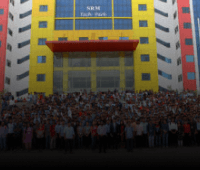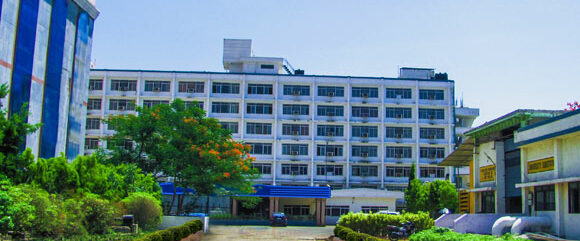
Simulation Laboratory
Simulation Laboratory
The Simulation Laboratory aims to provide state-of-the-art simulation facilities to students, enabling them to fulfil the academic and professional requirements of the Electrical and Electronics Engineering discipline. This facility plays a pivotal role in bridging theoretical knowledge with practical applications, empowering students and research scholars to design, analyze, and optimize various electrical circuits and controller.
Specifications
The laboratory is equipped with cutting-edge infrastructure to ensure a seamless simulation experience. In the lab 140+ high-performance computers with the following advanced configurations:
- 12th Generation Intel Core i7 Processors
- 32 GB RAM for superior multitasking and simulation speed
- 512 GB SSD storage for fast data access and processing
- Windows 11 Operating System for an efficient and modern user interface
Purpose and Applications
The Simulation Laboratory serves as a hub for students and researchers to:
- Simulate and analyze electrical and electronic circuits, systems, and controllers.
- Develop models for real-time applications and advanced control mechanisms.
- Enhance technical expertise in industry-standard simulation tools and software.
By offering a hands-on learning environment, this facility ensures that students gain the skills required to excel in research, development, and professional practice in Electrical and Electronics Engineering.
- ETAPv 24
- LabVIEW 24
- EMTP 4.1
- SIMBA 24.05
- DigSilient PowerFactory 8.2
- MiPower 10.0
- Power world simulator
Academic Support for UG and PG Programs
- The Simulation Laboratory is actively employed to conduct experiments and practical sessions for various UG and PG courses.
- It serves as an essential resource for students to bridge theoretical concepts with practical implementation, enabling a comprehensive understanding of electrical and electronic systems.
Online Learning Platform Accessibility
- The laboratory provides access to premier online learning platforms such as NPTEL, Coursera, and MOODLE, encouraging students and faculty to pursue self-paced online certification courses and skill development programs.
- This integration enhances the learning ecosystem by equipping students with cutting-edge knowledge and industry-relevant skills.
Research and Resource Accessibility
- Faculty members, research scholars, and students extensively utilize the laboratory to access reputed academic journals and publications from globally renowned publishers, including:
- IEEE
- IET
- Elsevier
- Taylor and Francis
- Springer
- These resources support the preparation of research papers, literature reviews, and project documentation.
Simulation Software for Research and Projects
- The laboratory is equipped with advanced simulation software that facilitates the modeling, analysis, and design of practical systems.
- Students and researchers utilize these tools for:
- Research Projects: Gaining deeper insights into complex system behaviors.
- Major and Minor Projects: Designing and implementing innovative solutions to real-world challenges.
- Class Assignments: Enhancing problem-solving skills and theoretical comprehension.
- This environment enables students to experiment with various configurations and scenarios, fostering creativity and critical thinking.
By leveraging the Simulation Laboratory, the Department of Electrical and Electronics Engineering continues to advance academic excellence and promote cutting-edge research, ensuring students and faculty remain at the forefront of technological innovation.
The laboratory investment, totaling ₹1,14,43,067, encompasses both system and software expenses. This comprehensive investment covers a range of equipment and software essential for advanced research and education.
Contact Persons
Dr. Sureshkumar A
Assistant Professor
9994279784
sureshka@srmist.edu.in
Mr. Navaneethan N
Programmer
9500897535
navaneen@srmist.edu.in

Electrical Science Block, Room number: ESB: 216, 215. Open Door Access : 9:00 am – 5:00 pm















